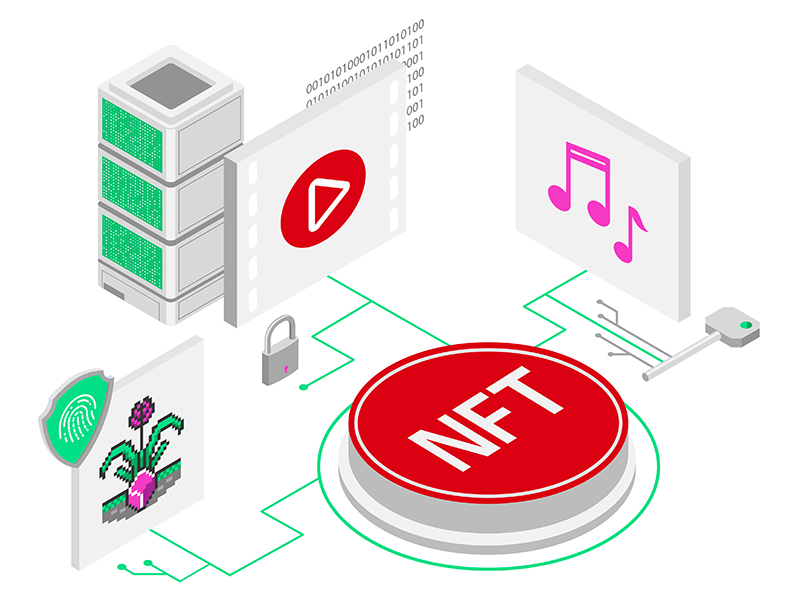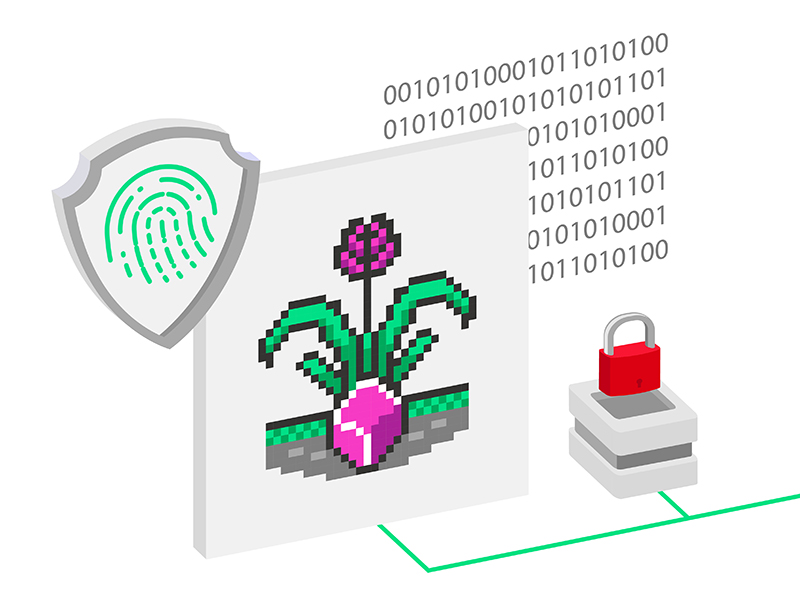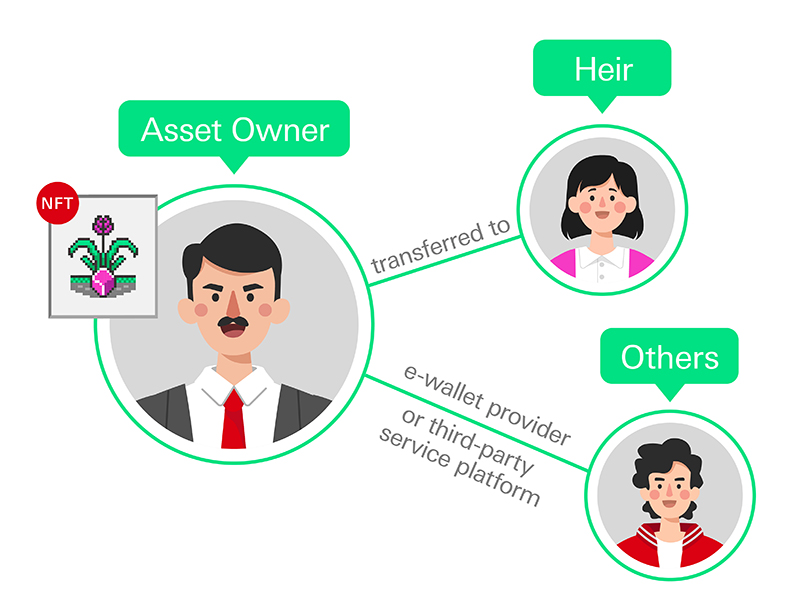Collectible digital art - Moving beyond the traditional
NFT has lately become the darling of the art world. But why? As the new must-have of the virtual age, can NFT be inherited just like traditional art? Read the insights of an international auction expert.

In the past, traditional masterpieces such as paintings and sculptures by great artists often broke auction records and became hot topics around the world. In recent years, the art world is increasingly turning to such decentralising technologies as virtual currencies and blockchains to verify art collections and ensure their uniqueness. As a result, new auction records are now often set by NFT artworks, and the surge in public interest is accompanied by many questions about this type of assets as inheritance. We talked to Mr Jacky Ho, Vice President at Christie’s, to get his expert perspective.
What is NFT?
 |
A Non-fungible Token (NFT) is a virtual asset. Each token is made by embedding designated information in a blockchain as a unique signifier of ownership, enabling it to be bought and sold on online trading platforms. Common NFTs include digital images, illustrations, recordings, videos, games or the virtual characters and equipment in animated productions. They can also be in other forms or even physical objects. The difference between an NFT and a cryptocurrency, which are both made with blockchain technology, is that one is fungible and the other is not. Cryptocurrencies are fungible tokens. Take bitcoins as an example. Bitcoins with the same designated value are the exactly the same. They are therefore interchangeable and can be divided into smaller units. An NFT, on the other hand, is non-fungible. That is, each NFT represents something different, and therefore is not replaceable or dividable. Since blockchain ledgers cannot be altered or erased and all transaction records are open to public view, NFTs stored on blockchains cannot be duplicated or forged1. |
Digital artworks can fetch prices that are comparable to those of paintings by the masters. Why is that?
 |
The market is still at its developmental stage, so it’s hard to predict what will happen in the future. International art collectors are adapting to a new age, and more and more people are buying and selling digital assets. What was once a tool for science and technology has now found its way into popular culture, and works are attracting the attention of elite collectors in the traditional art market. Also, NFTs are eminently collectible, as they can be used to:
Ultimately, though, digital art is just like other art forms. Value is predicated on artistic merit and the popularity of the artist. If you look at the recent transactions, it doesn’t matter what medium a masterpiece is created in; if it’s good, it’ll attract high bids. |
Can NFT assets be transferred or gifted to family members like conventional assets?
 |
NFTs can be used to verify jpeg images or other digital assets and confirm they are one-of-a-kind. Generally, they can be bought, sold or transferred freely, for example to an heir. Their provenance is also permanently traceable. After acquiring an NFT asset, a collector can re-sell or transfer it through e-wallet providers or third-party service platforms that support blockchains. |
As many experts have pointed out, digital assets are still in their infancy. Only time will tell how great their potential is. By the same token, each of us is faced with many unknowns where the future is concerned. To prepare for what is to come and build your dream life with your family, you need to get an early start on your protection, wealth and succession planning. With all the right plans in place, you’ll find that the future is something that fills you with confidence.
Notes:
The information above is provided by the interviewee and reproduced here for reference only. It does not constitute any legal advice or recommendations for any individual. No financial decision should be made solely on the basis on such information. The opinions expressed above are the interviewee’s own, and not those of HSBC Life (International) Limited or the HSBC Group.
1 IFEC website: Are NFTs works of art, collectibles or investment products? (18 May 2021)
